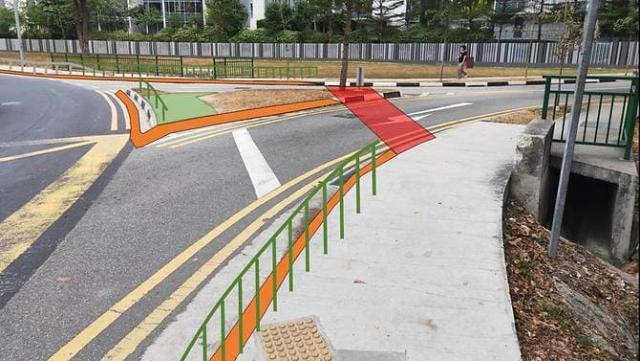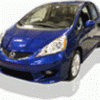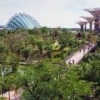Search the Community
Showing results for tags 'Roads'.
-
Have you guys noticed recently that more and more lanes which can go straight previously, have now been converted to right turn only? I can understand LTA removing the discretionary turns, but this seems to be overkill. Some not even repainted/repaved properly, just scrubbing the old arrow off.
- 103 replies
-
Buses with rooftop gardens will begin plying Singapore's roads, as part of an initiative to study possible energy and cost savings for bus operators. The Garden on the Move initiative, which was launched on Sunday (May 5), will see 10 SBS Transit buses ply Singapore’s roads for at least three mont...
-
https://www.bbc.com/future/article/20210302-could-plastic-roads-make-for-a-smoother-ride On a road into New Delhi, countless cars a day speed over tonnes of plastic bags, bottle tops and discarded polystyrene cups. In a single kilometre, a driver covers one tonne of plastic waste. But far from...
- 14 replies
-
- 10
-

-

Not sure how to parallel park? Here's a guide if you need a refresher
chitchatboy posted a blog entry in MyAutoBlog
If you find parallel parking challenging, here's a step by step guide to refresh yourself if you feel like overcoming your fears. Seen on ROADS.sg and contributed by Syed Al-Qudree, this very comprehensive guide even though some might argue that it is not easy to judge the distance betwee... -
https://www.channelnewsasia.com/news/singapore/electric-car-sharing-scheme-to-hit-the-roads-dec-12-9466622 Electric car-sharing scheme to hit the roads Dec 12 The first fleet of cars for an electric car-sharing scheme will hit the roads next Tuesday (Dec 12). BlueSG, a subsidiary of French...
- 81 replies
-
- 8
-

-
- electric car
- sharing
-
(and 5 more)
Tagged with:
-
Been encountering alot of these 'blind' pedestrians. Walk across road, nvr look out for traffic, like grandfather's road. Yesterday encounter 1, dash across road without checking for cars, gimme a scare.....
- 265 replies
-
- 1
-

-
- pedestrians
- stupid
-
(and 3 more)
Tagged with:
-
Wow....haven't seen a NSX on our roads for quite a while. In classic Senna red somemore. Nice way to start the day
- 11 replies
-
- 21
-

-
SINGAPORE: Several measures will be put in place to reduce vehicular speed and improve pedestrian safety at the roundabout in Marine Parade where a fatal accident took place in March. Announcing the measures on Monday (May 20), the Land Transport Authority (LTA) said it will implement tighter t...
- 79 replies
-
- 9
-

-
- roundabout
- marine parade
-
(and 5 more)
Tagged with:
-
hmmm...Always heard some stories & experience from my friends on some haunted roads such as Lim Chu Kang etc..Anybody wants to contribute?
-
another best for Singapore http://www.todayonline.com/Singapore/EDC11...st-in-the-world Singapore's roads rated the best in the world 03:04 PM Aug 18, 2011 SINGAPORE - The Republic's road network has been rated the best in the world, in both design and safety. It receiv...
-
Is it just me or is does anyone else realize that our roads conditions getting bumpier or uneven even expressways and heartlands.
- 172 replies
-
- Conditions
- Singapore
-
(and 1 more)
Tagged with:
-
There has been an increase in road works recently.... there was so much digging here n there to lay/maintain underground cables causing lane closures n jams......... but the worst thing is the road reinstatement..... Most were not done properly and caused very bumpy roads..... generally the poor rei...
-
New roads, new places to explore. Three new roads to open in Bidadarihttp://www.straitstimes.com/singapore/three-new-roads-to-open-in-bidadari Three new roads in Bidadari estate will be opened partially on Jan 14 to serve the upcoming developments there. They are Bidadari Park Drive, Al...
-
Hi all, Just curious since I am still inexperience in all these. On Singapore roads given that my ride is front and back brake disc, just how often are the brake pads changed. Cause I realized that driving on local road uses the brakes a lot due to constant traffic light stoppages, t...
-
Found this in a forum. http://www.shc-forum.com/posting.php?mode=quote&p=1073546 Posted: Fri Dec 01, 2006 12:57 am Post subject: OT : Be careful of junction at Yio Chu Kang Road Hi All Because of work I usually drive back home late along Yio Chu Kang Road towards Thomson roa...
-
Would like to know if it is possible to get a road tax refund because roads are not up to standard? The number of roads on construction has increased and caused damage to car suspensions and caused hazards. Ie the workers anyhow place the cones and reduce the lane size and put concrete anywhere...
- 42 replies
-
- 1
-

-
- road tax
- road condition
-
(and 6 more)
Tagged with:
-
Watch the video. I think it's a great idea. Use plastic waste and maybe get a longer lasting road that don't break down as much.
-
http://motoring.asiaone.com/Motoring/News/...630-286832.html Better drive safe arh all those got mod one better own up now arh!!!!!!
-
According to traffic police latest update 1 ADAM RD 2 ALEXANDRA RD 3 ANG MO KIO AVE 5 4 AYE 5 BKE 6 BOON LAY WAY 7 BRADDELL ROAD 8 BT PANJANG RD 9 BUANGKOK GREEN 10 BUKIT TIMAH ROAD 11 CTE 12 DUNEARN ROAD 13 ECP 1...
-
From AsiaOne: http://ride.asiaone.com/news/general/story...oads?page=0%2C0 How safe are our roads? (Clockwise from top) The junction of Rochor Road and Victoria Street, where a Ferrari driver ran a red light and hit a taxi on May 12 last year; the scene of a chain collision inv...
-
Recently I have noticed that there are road works in Bedok to narrow a few roads. Examples are 2 streteches of Bedok North St 3 (one near Bedok North Ave 2 and the other one near Bedok North Ave 1). They are being converted from 2 lanes to 1 lanes. also, for the part of Bedok North Ave 1 (near...
-
We were too quick to congratulate ourselves. February's announcement that biker and pillion deaths fell by four to 72 last year sounded like good news for bikers. Yet any comfort the statistics provided has been tragically cut short. The New Paper reported this week that there were 23 bike-re...
-
Singapore Airlines crew injured in New Zealand car crash http://singapore.coconuts.co/2014/10/01/video-singapore-airlines-crew-injured-new-zealand-car-crash A road accident that occurred Wednesday morning in Canterbury, Christchurch, is said to have involved five Singapore Airlines (SIA...
-
Singapore's Central Business District, new Marina Bay Downtown and its future southern waterfront district may be linked by an extensive underground road network beyond 2030. SINGAPORE'S Central Business District, new Marina Bay Downtown and its future southern waterfront district may be linked b...





















